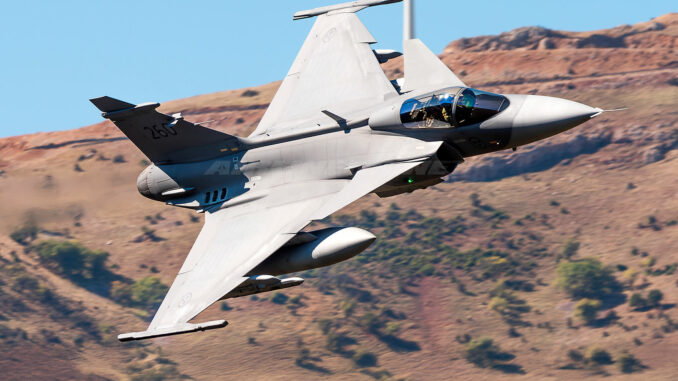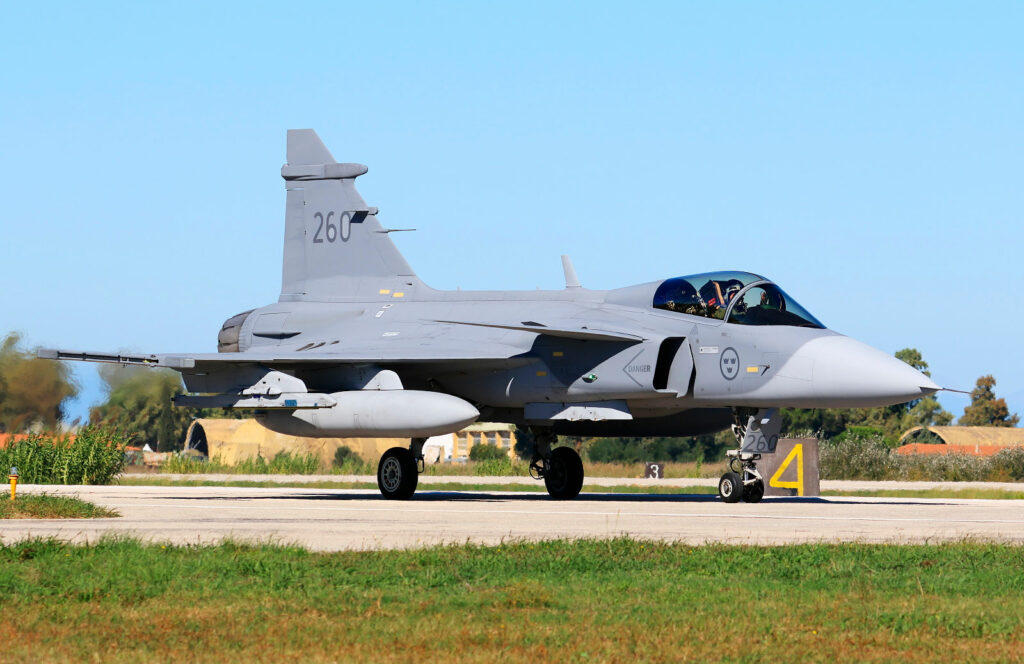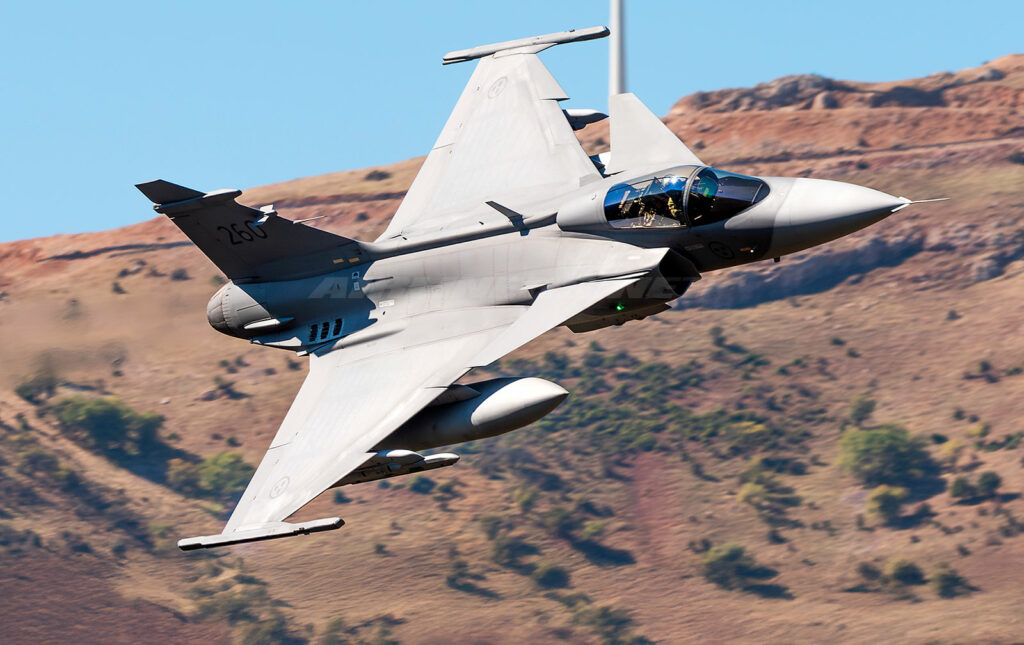
Colombia is replacing its Kfirs with Saab Gripen E/Fs, modernizing its air defense with 16 to 24 latest-generation multirole fighters.
Colombia has announced its intention to acquire between 16 and 24 Saab Gripen E/F fighters to replace its aging fleet of Israeli Kfirs. This decision aims to strengthen the country’s air superiority and protect its national sovereignty. The Gripen E/F, equipped with state-of-the-art technology, offers a multirole capability tailored to the needs of the Fuerza Aeroespacial Colombiana. This acquisition also marks a deepening of diplomatic and industrial relations between Colombia and Sweden.

Details of Colombia’s acquisition of Saab Gripen E/F
Colombian President Gustavo Petro has confirmed the purchase of Saab Gripen E/F fighters to replace the current Kfir fleet, which has been in service since the late 1980s. This decision follows a thorough evaluation of the available options, including the French Dassault Rafale and the American F-16. The Gripen was chosen because of its advanced technology and competitive cost.
Colombia plans to acquire between 16 and 24 aircraft, although the exact number and financial terms have yet to be finalized. In 2023, a budget estimated at 15 trillion Colombian pesos (approximately 3.615 billion euros) was envisaged for the purchase of 16 aircraft. This acquisition represents one of the country’s largest military expenditures in recent decades, underlining the importance placed on modernizing national defense.
Technical characteristics of the Saab Gripen E/F
The Saab Gripen E/F is a latest-generation multirole fighter, designed to be light and agile while incorporating advanced technologies. It has a slightly enlarged airframe compared to previous versions, increasing the internal fuel capacity by 40%, reaching 3,400 kg. This increase is made possible by moving the landing gear towards the inner wings.
The aircraft is powered by a General Electric F414G engine, offering a maximum thrust of 98 kN. It is equipped with ten hardpoints, allowing a maximum external load of 6,000 kg, and can carry a variety of armaments, including up to seven long-range MBDA Meteor air-to-air missiles. The Gripen E/F also incorporates the Leonardo ES-05 Raven AESA radar and the Skyward G infrared sensor, offering advanced target detection and tracking.
Strategic consequences of the acquisition for Colombia
The replacement of the Kfirs by the Gripens E/F will have significant implications for Colombian defense. The Kfirs, although modernized with Elta EL/M-2032 radars and Rafael Derby missiles, are nearing the end of their operational life cycle. In addition, the breakdown of diplomatic relations between Colombia and Israel in 2024 has complicated the maintenance of these aircraft, making their replacement even more urgent.
The introduction of Gripen E/F will improve Colombia’s ability to defend its airspace and respond to regional threats. These aircraft offer better autonomy, advanced avionics and increased operational flexibility, thus strengthening the country’s strategic posture in South America.

Impact on the aviation industry and bilateral relations
This acquisition strengthens the diplomatic and industrial ties between Colombia and Sweden. The president of Saab, Micael Johansson, expressed his satisfaction with this decision, emphasizing the importance of the Colombian market for the company. In addition, social compensation is provided for in the agreement, including the construction of a solar panel factory in the department of Córdoba, the installation of drinking water systems in the region of La Guajira and the modernization of the San Juan de Dios hospital in Bogotá.
The experience of Brazil, which is co-producing the Gripen E/F and assembling 15 of the 36 aircraft ordered, could serve as a model for possible Colombian industrial involvement in the Gripen program. This would offer Colombia opportunities for technology transfer and skills development in the aeronautics sector.
Prospects and challenges of Gripen E/F integration
The integration of the Gripen E/F into the Fuerza Aeroespacial Colombiana will require extensive training of pilots and technical personnel, as well as the establishment of an infrastructure suitable for the maintenance of these aircraft. However, the Gripen E/F is designed to operate in austere environments with minimal logistical support, which should facilitate its adoption by the Colombian forces.
Ultimately, this acquisition positions Colombia as a major player in air defense in South America, capable of meeting regional security challenges with a modern and efficient fleet.
War Wings Daily is an independant magazine.